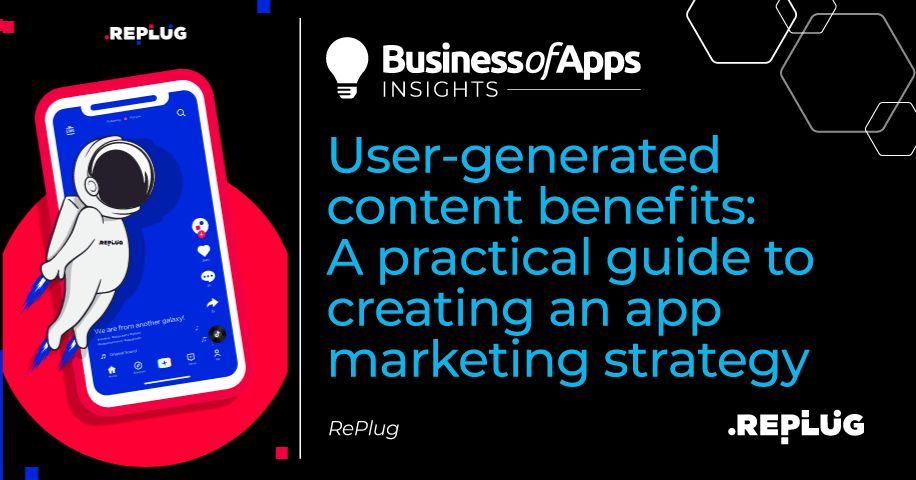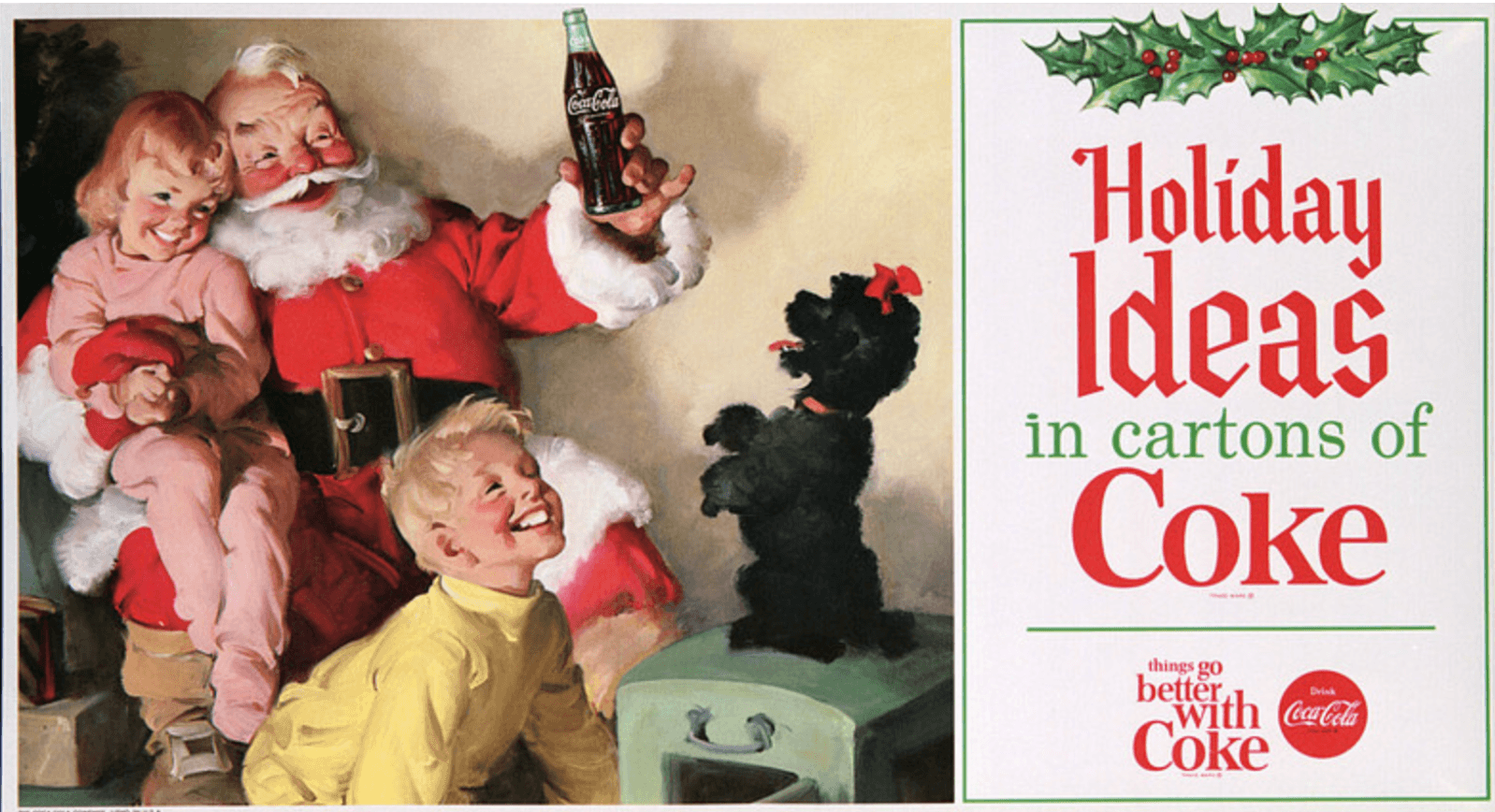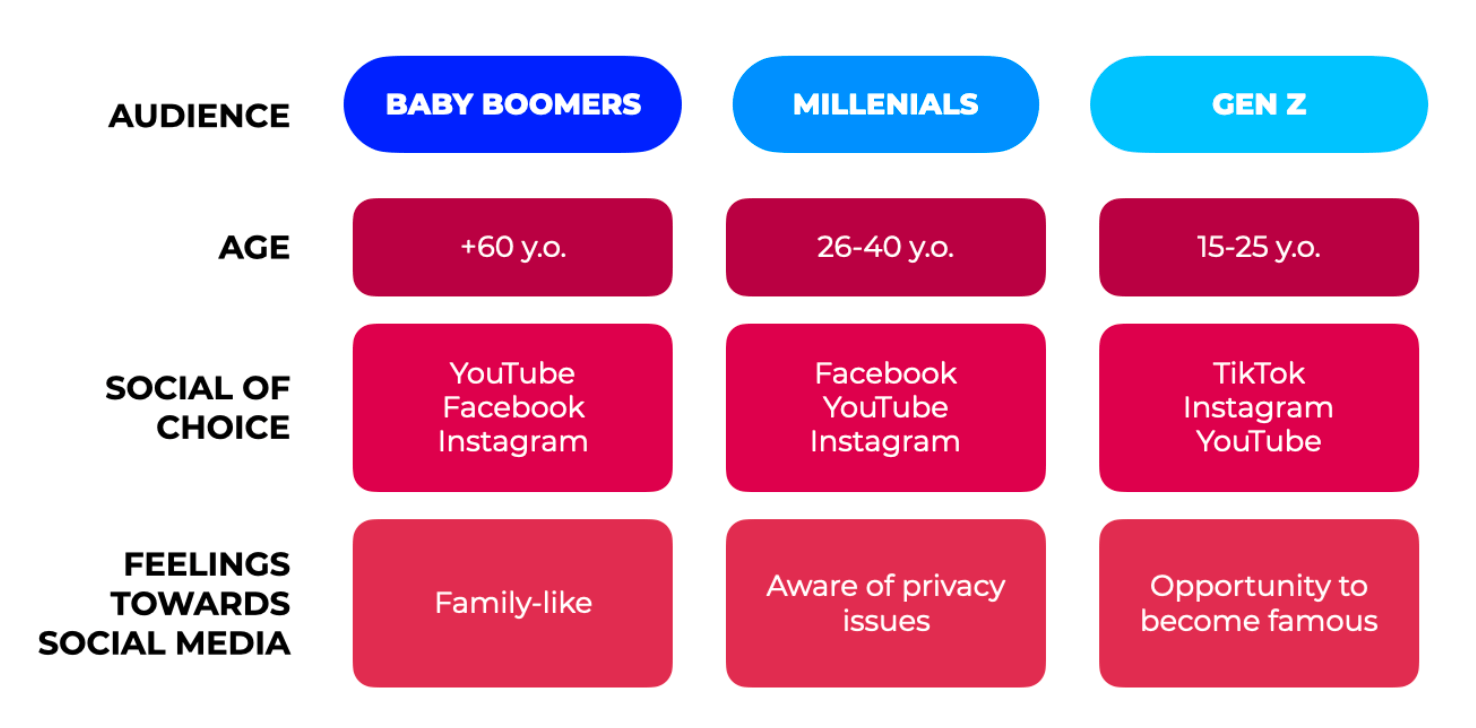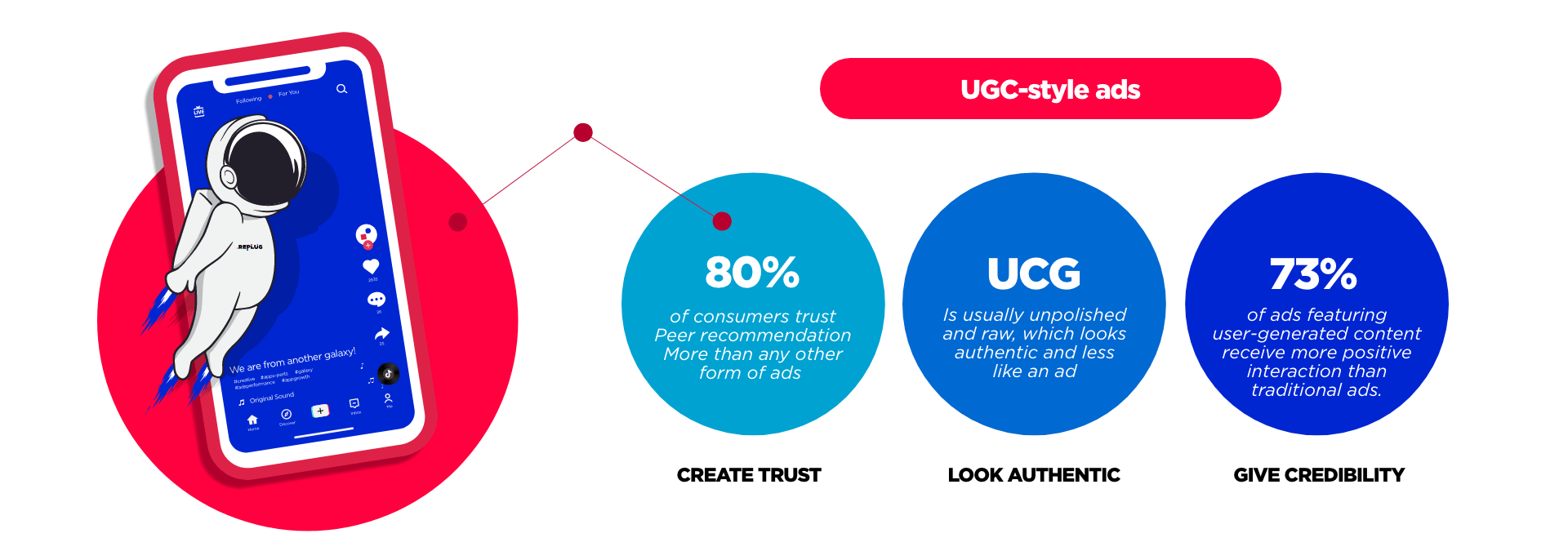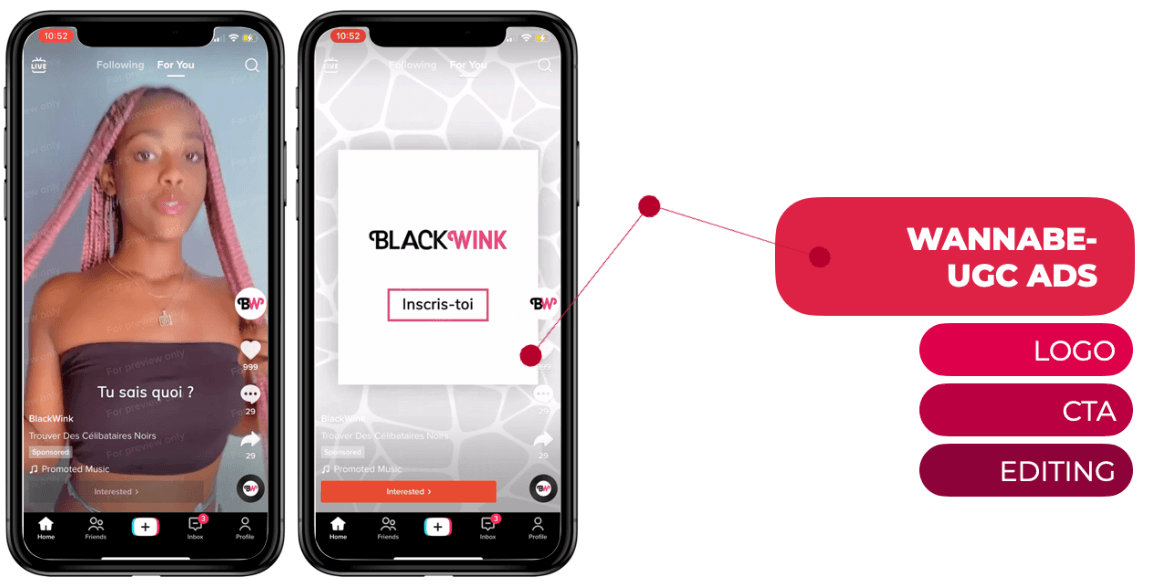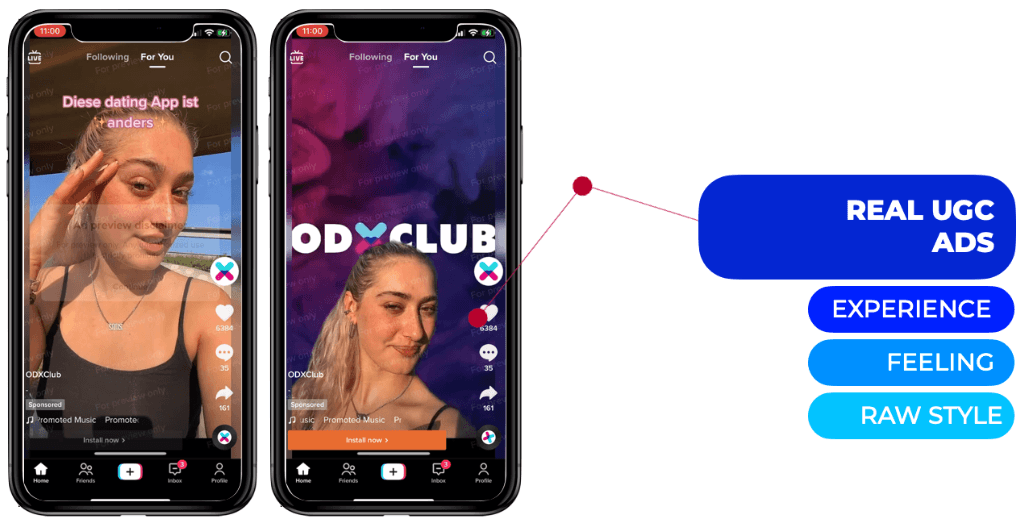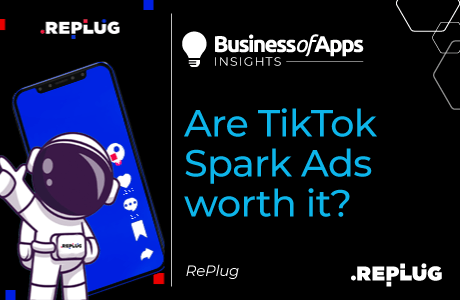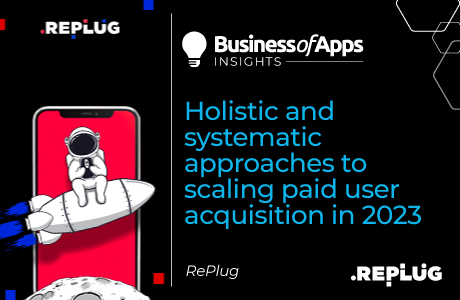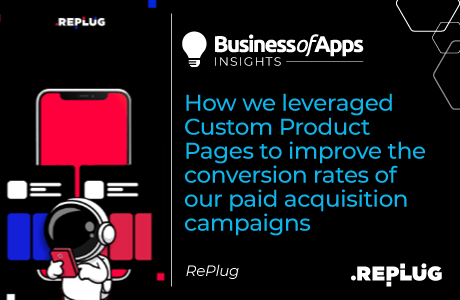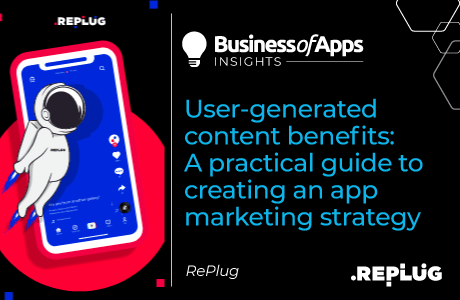Did you know about the all user-generated content benefits you can get? In this article, we will cover the crucial points about UGC and help you see how you can implement them in your app marketing strategy!
User interaction with brands has changed dramatically over the past few decades. Marketing practices, advertising techniques, and communication channels have drastically changed as users have modified their behavior.
Back in the day, in traditional advertising, the product was central to the communication strategy. The messaging focused on how thanks to the product advertised; our lives would have improved or changed.
Example of a traditional ad
Source: REPLUG
Coca-Cola was one of the first companies to master this approach (followed by many others), where the product created happiness and united families. On top of that, the brand created fictional characters to boost the emotional attachment to the product.
With time and technology, however, there has been a shift in how users interact with brands. We have moved away from product-focused and fictional storytelling. Today, users want real people and real experiences.
Connection is the new currency
Research has shown that the majority of users (more than 80%) prefer to interact with brands through their social media channels, as opposed to traditional ads, email, or social ads.
Social channels offer a more authentic way for brands to connect with their customers. In the past few years, social media has taken a prominent role in our everyday lives, and for companies, this is a unique opportunity to connect with users in a more human way.
In the current world, brands that establish a real connection with their users are also in the driving seat for creating long-lasting loyalty.
How did social media change the way we interact with brands?
Social media has stormed into our lives for a few years now. For the first time, different generations can express their thoughts to everyone with few restrictions (for good or bad).
Different generations, however, are using social media platforms in different ways.
Social media audience segments by generation
Source: REPLUG
In today’s world, we have become the primary source of content. Without us, social media wouldn’t exist. That puts us all in a special spotlight because we are now the product, the creators, and the ads.
Is it worth investing in user-generated content for ads?
In our experience, many brands still need help understanding the power of UGC for ads. While traditional influencer marketing is a practice that has been widely accepted across different categories and companies’ sizes, user-generated content still needs some help getting accepted.
The main reason for this acceptance issue is that UGC-style ads don’t always follow branding guidelines because these are created with the channel in mind rather than the brand itself. To understand this better, we need to consider what TikTok says about making ads on their platform “Make TikTok, Don’t Make Ads.”
User-generated content can help marketers to create their unique stories and appeal to the target audience in a completely different way from traditional ads.
UGC-style ads
Source: REPLUG
When it comes to UGC-style ads, marketers need to remember that real people drive real connections.
Differences between UGC-style ads
Before moving on to creating a winning strategy for our app marketing campaigns and getting the most out of user-generated content benefits, it’s crucial to understand the difference between user-generated content styles. Many marketers wrongly believe engaging a content creator for a UGC ad is enough to succeed.
As mentioned above, however, user-created content ads have three main characteristics:
- They are raw.
- They are unpolished.
- They don’t look like an ad.
When these three conditions are not met, we fall into a category that we like to call “wanna-be UGC.” Here’s an example of this.
Example of a UGC-style ad (1)
Source: REPLUG
Wanna-be UGC ads are built in a way that recalls traditional ads as. They are nicely edited, and the last frame has a proper CTA and logo from the advertising company.
On the other hand, real user-generated content ads reflect the channel’s style and take advantage of the different filters or trends happening on the social media platform. Here’s an example of another client of ours.
Example of a UGC-style ad (2)
Source: REPLUG
The 6 steps to creating a winning user-generated content strategy for your app marketing campaigns
Building a UGC strategy for our app marketing campaigns is not complicated but requires us to follow specific steps to ensure success and results. Below, we listed our six main recommendations for marketers to follow when thinking about implementing UGC in their ads strategy.
The brief – Real connections work
The brief is the first step in the creative process. With traditional ads, this involves several stakeholders, and it’s often a back-and-forth between the marketers and designers. For user-generated content, we, as marketers (and designers), need to take a step back. Our key recommendations for this step are:
- Limit the restrictions for the creators – Let the creators be creative.
- Forget traditional messaging – UGC is a separate world. To succeed, we need to align the communication style with the social media used.
- Don’t be scared to try new things – Be bold, be creative, and step out of your comfort zone.
At REPLUG, we have been testing UGC-style ads for a long time now and, of course, learned a lot while making mistakes. Today, those three recommendations guide our team when working on the UGC strategy for our partners. Just by following these three steps, we have noticed a 4x increase in engagement with our ads.
Authenticity – The key to scale
User-generated content needs to be authentic to work and bring the desired results. It should look different from normal traditional ads or an influencer video. UGC-style ads need a different approach when it comes to communication.
When A/B-testing different UGC-style ads for our partners, we were able to see some amazing results for those videos that looked authentic, as opposed to polished.
Adopt a dedicated UGC communication approach
When thinking about trying out UGC-style ads or when looking to scale these types of activities, marketers need to create a separate approach for this communication strategy.
Some companies are lucky enough to have already users talking about their brands on social media. In this case, simple research for #companyname can lead to interesting results in discovering potentially ready-to-use user-generated content.
Having someone in your team that focuses on UGC is key for long-term success. At REPLUG, for example, we have a dedicated resource to scout content creators and categorize their styles according to the channel where we would advertise.
One last thing that most marketers don’t consider is that user-created content style is cheap to produce, but the impact can be pretty high.
We used different types of user-generated content with one of our partners to scale beyond the traditional advertising channels and communication strategy. When our Paid UA team implemented these UGC-style ads, we saw an uplift in conversion that led to a decrease in cost-per-acquisition of about 53%.
Align the content with the period of the year
Like other marketing activities, user-generated content ads can (and should) be aligned with the period of the year. Taking advantage of common holidays is a good practice to ask content creators to create videos targeting that specific festivity.
Regarding UGC in marketing, as marketers, we need to remember that we should let content creators be creative and build a story about it without forcing too much the hand on the style and the message. For eCommerce brands, this usually comes pretty easily, but other brands in different categories, with a pinch of creativity, can also take advantage of this.
Refresh the content to keep performance high
One downside is that UGC has high ad fatigue. Usually, after 7-10 days, the content is overused and needs to be changed. Below is a graph showing how for one of our partners, after only 10 days, the CPM and CTR were affected by ad fatigue.
CTR and CPM for UGC-style ads
Source: REPLUG
In this specific case, we could see how the CPM increased by 80% while the CTR decreased by 51%.
When working with UGC-style ads, it’s important to refresh the content continuously. That means that having a dedicated approach to user-generated content (as mentioned in point 4) is crucial to success.
Eat. Sleep. Test. Repeat.
This is our mantra at REPLUG. When working on campaign optimization, we are constantly testing new things to learn and iteratively improve the results. In user-generated content ads, marketers need to remember that:
- There’s no one-size-fits-all approach – UGC is a unique format and within that, each creator has their own unique style.
- Apply the same test mechanics – Even though UGC ads should not be treated the same way as traditional ads, the testing approach is not different.
- Test. Test. Test.
Replug’s advice on how to win at user-generated content
To help you implement a winning UGC strategy, we prepared a list of Dos and Don’ts to keep in mind when setting up UGC ads for your mobile app:
UGC-ads dos
- Let the creators be creative
- Be true to your brand values and show authenticity
- Take advantage of holidays throughout the year
- Find creators who are already talking about your brand
- Create an experience
- Eat, sleep, TEST, repeat
UGC-ads don’ts
- Don’t be afraid to test new ideas
- Don’t force the creators to speak your language
- Don’t ignore trends on social media
- Don’t apply the “traditional” marketing communication techniques
- Don’t make ads
- Don’t assume. TEST.
User-generated content benefits: Conclusion
UGC content used in ads can be a driving force to your app growth. However, you need to be ready to challenge traditional advertising principles and step out of your comfort zone to get the best user-generated content benefits.
In addition, UGC ads can be incredibly effective in scaling paid user acquisition campaigns for mobile apps on a performance basis.
Are you looking to test user-generated content ads in your app marketing strategy? Get in contact with Luca Mastrorocco, REPLUG co-founder and head of growth.



